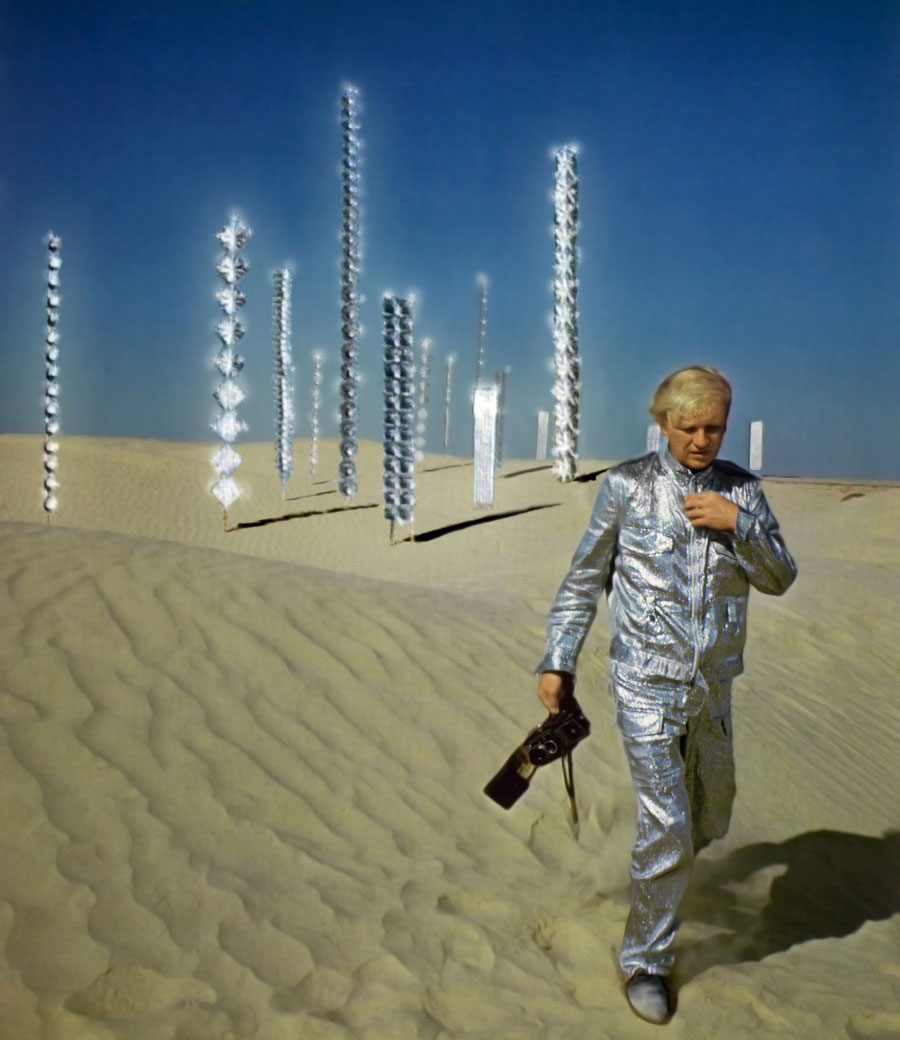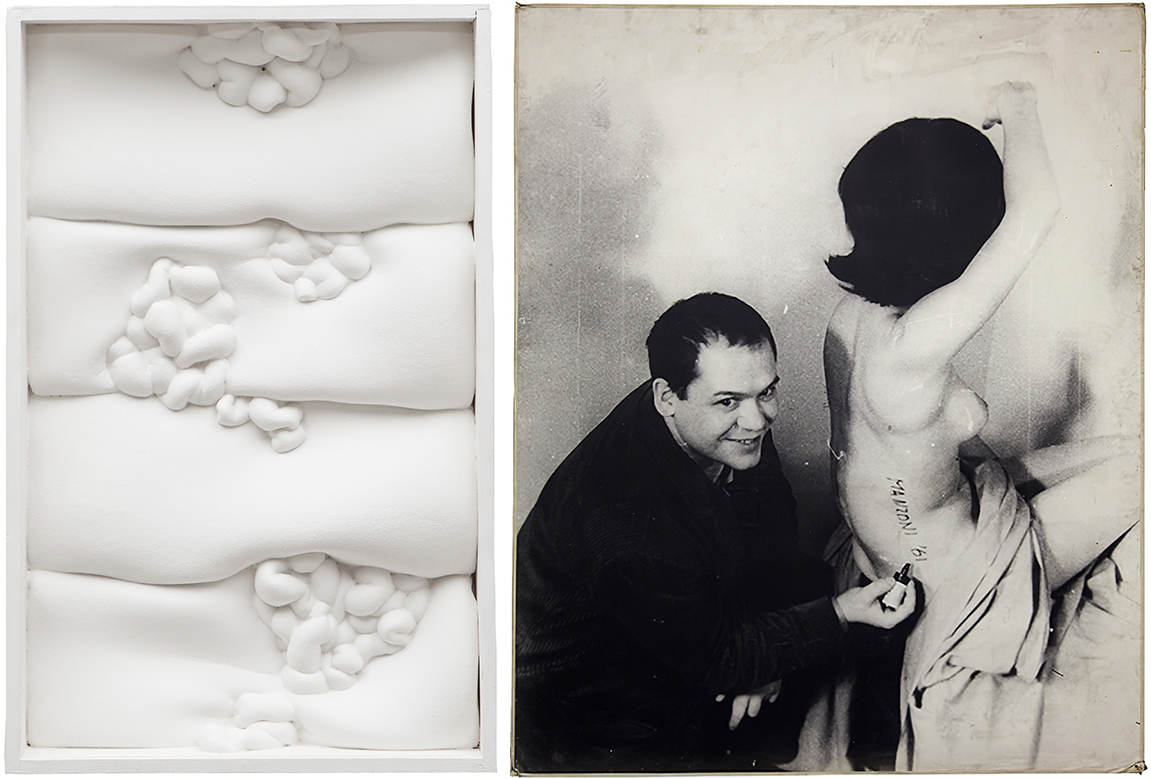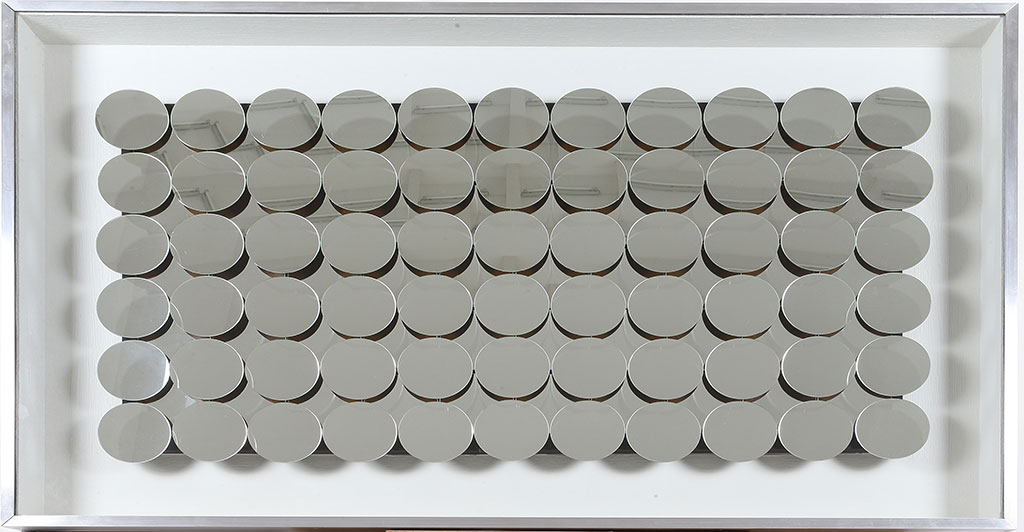ART-PRESENTATION: ZERO is Infinity-ZERO & Yayoi Kusama
 ZERO Group formed by Heinz Mack and Otto Piene in 1958 in Düsseldorf, Germany, with Günther Uecker later joining in 1961. However, by publishing the magazine “ZERO” and holding many exhibitions, the group’s activity began to involve many active artists, groups and movements from various places in Europe: Yves Klein from France, Piero Manzoni and Enrico Castellani from Italy, and Henk Peeters and Jan Schoonhoven, founding members of Dutch avant-garde group Nul from the Netherlands. Like the resetting of the European continent separated under World War II, ZERO has been a powerful motivation for transnational collaboration between avant-garde artists.
ZERO Group formed by Heinz Mack and Otto Piene in 1958 in Düsseldorf, Germany, with Günther Uecker later joining in 1961. However, by publishing the magazine “ZERO” and holding many exhibitions, the group’s activity began to involve many active artists, groups and movements from various places in Europe: Yves Klein from France, Piero Manzoni and Enrico Castellani from Italy, and Henk Peeters and Jan Schoonhoven, founding members of Dutch avant-garde group Nul from the Netherlands. Like the resetting of the European continent separated under World War II, ZERO has been a powerful motivation for transnational collaboration between avant-garde artists.
By Efi Michalarou
Photo: Yayoi Kusama Museum Archive

The major group exhibition, “ZERO IS INFINITY, ZERO and Yayoi Kusama: features Yayoi Kusama’s activity in Europe during the 1960s, introducing ZERO’s art practices and also explores their relationship with Yayoi Kusama. In 1958 Heinz Mack and Otto Piene organized an exhibition in Dusseldorf, with around 20 informal artists on the theme of RED. A small, self-published publication was made, in German, with the title ZERO1. Next, another second thematic exhibition and another edition ZERO2 appears. ZERO3 was published in 1961, but as the network spread, the exhibitions and publications become a large-scale event, and now the texts are also in French or English, with contributions by many international artists, It was the beginning of the internationalization of ZERO, both in the museum and commercial art world. A few years before, in 1953, a local experimental artist group ZERO (ZERO-KAI) was founded in Japan. The main members were Saburo Murakami, Kazuo Shiraga, Atsuko Tanaka. The group was short-lived after Shozo Shimamoto asked the ZERO members to join the Gutai group founded by Jiro Yoshihara in 1954. The group organized one-day open-air exhibitions and regularly published journals from 1955 on, first in Japanese, later in English. Gutai quickly gained notoriety from its events and magazines, drawing the attention of artists and galleries around the world. While Düsseldorf and Osaka were central, soon a new pan-European, avant-garde network of informal artist groups spread to Rotterdam, Milan, and Paris. The same year that the first ZERO magazine was published in Dusseldorf, the (a) ZERO group was founded in Rotterdam by Hans Sonnenberg. The group consisted, among others, of Jan Schoonhoven and Piero Manzoni. The following year, Piero Manzoni, together with Enrico Castellani, started the Azimuth gallery and published an international art magazine under the same name. Besides their own work, the gallery also showed their international “ZERO” colleagues. The French critic Pierre Restany published his “Manifeste du Nouveau Réalisme in 1960 and founded a group with the same name. The group consisted, among” others, of Yves Klein and Jean Tinguely. And Henk Peeters, started with Armando and Jan Schoonhoven the Dutch NUL group! At the time, Yayoi Kusama was based in New York and participated in many exhibitions along with other leading artists of Pop art and Minimalism. While she received high acclaim from the New York art world, she regularly presented her art across Europe, in particular at exhibitions led by ZERO, attracting attention in the European art scene in the 1960s. Kusama’s first invitation to the European exhibitions was for “Monochrome Painting”, curated by Udo Kultermann, and held at Morsbroich Museum, Leverkusen in 1960. After participating in this exhibition, Kusama started correspondence with ZERO artists such as Henk Peeters. Kusama’s pursuit of “Infinity” through her art finds various similarities with artistic expressions in the works of ZERO artists: in their experiments with new materials such as mirror, repetitions of single motifs, pursuit of monochrome and their orientations towards environment art and performance. In this context, the exhibition explores the transnational developments in Kusama’s and ZERO’s activities during the 1960s, by showcasing their works and documentation materials. The group show displays a work from “Infinity Nets”, Kusama’s monochrome painting series, a series shown in Europe for the first time at the above-mentioned exhibition in 1960. The newest work in her “Infinity Mirror Rooms” series, “Longing for Infinite Heaven”, as well as a reproduction of Christian Megert’s “Mirror Wall” (Spiegelwand) installation are also presented. Other highlights of the exhibition include another Kusama installation, “Narcissus Garden”, which was first presented in the 33rd Venice Biennale in 1966 with financial support from Lucio Fontana, who also exhibits an artwork from his signature series “Concetto Spaziale”. Subsequently, Yayoi Kusama presented bodily performance pieces in the late 1960s, having her subjective “self” as a core element of her art. Similarly, some of the ZERO artists developed their own art by emphasizing the performativity of their physical bodies as artistic embodiment. Finding this resonance in the trajectories of their artistic practices, documentary films of the performances, given by Heinz Mack, Yves Klein and Piero Manzoni, as well as by Kusama, are all shown together.
With works by: Enrico Castellani, Lucio Fontana, Yves Klein, Yayoi Kusama, Adolf Luther, Heinz Mack, Piero Manzoni, Christian Megert, Henk Peeters, Otto Piene, Jan Schoonhoven, Jesús Rafael Soto, Ferdinand Spindel and Günther Uecker.
Info: Yayoi Kusama Museum, 107 Bentencho, Shinjuku-ku, Tokyo, Duration: 5/3-31/5/20, Days & Hours: Thu-Sun 11:00-17:30, https://yayoikusamamuseum.jp


Right: Piero Manzoni signing a model, transforming her into Living Sculpture (Scultura Vivente), Milan, 1961, SEDI 1171 – MILANO: COME PIERO MANZONI METTE IN POSA UNA MODELLA – YEAR 1961 © Istituto Luce Cinecittà Photo: © Fondazione Piero Manzoni, Milan


